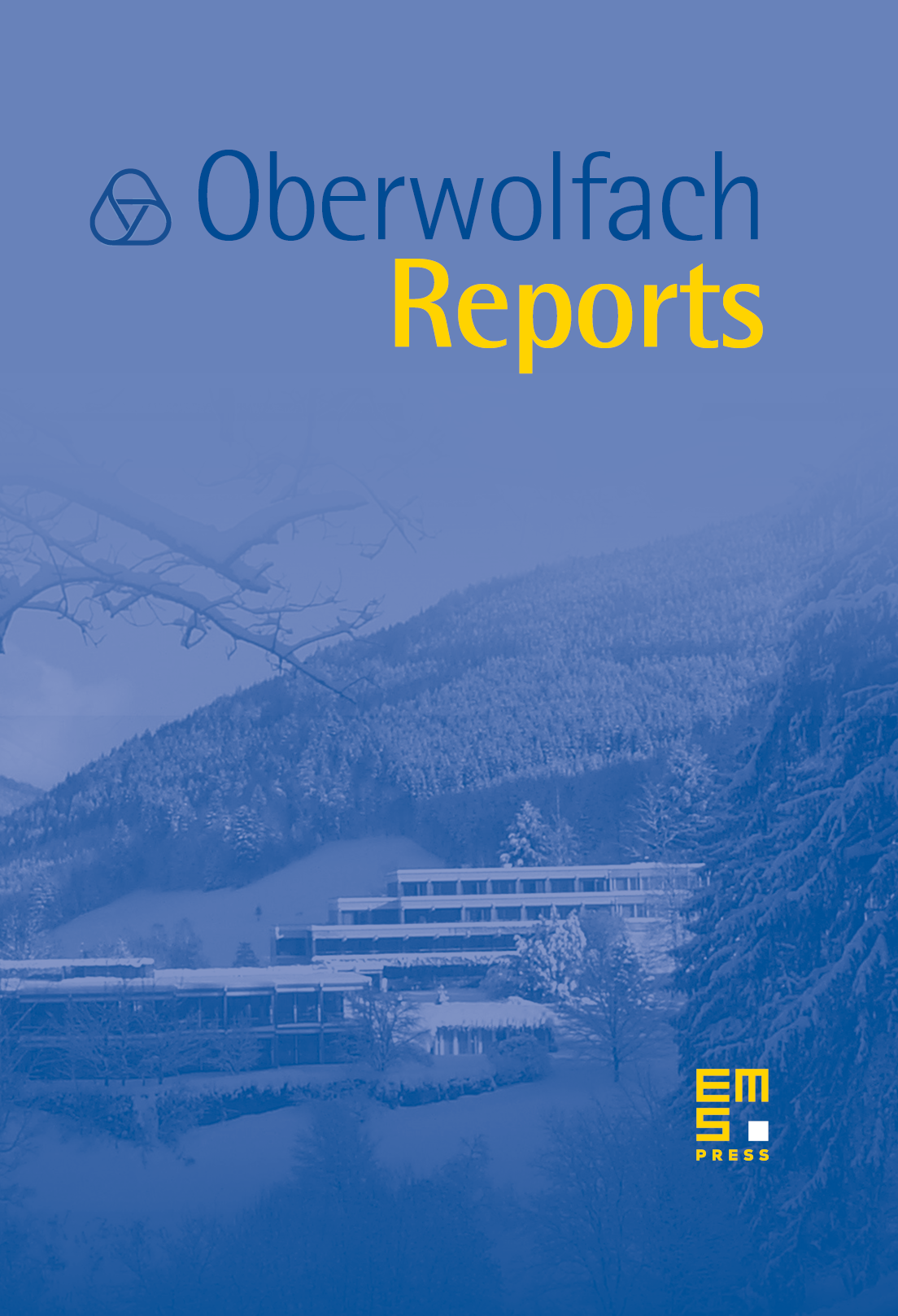Arbeitsgemeinschaft: Percolation
Vincent Beffara
École Normale Supérieure de Lyon, FranceJacob van den Berg
Centrum voor Wiskunde en Informatica, Amsterdam, NetherlandsFederico Camia
Vrije Universiteit, Amsterdam, Netherlands

Abstract
Percolation as a mathematical theory was introduced by Broadbent and Hammersley [4, 5] about fifty years ago to model the spread of a gas or a fluid through a porous medium. To model the randomness of the medium, they declared the edges of the -dimensional cubic lattice independently open (to the passage of the gas or fluid) with probability or closed with probability . Since then, many variants of this simple model have been studied, attracting the interest of both mathematicians and physicists.
Mathematicians are interested in percolation because of its deceiving simplicity which hides difficult and elegant results. For the physicists, percolation is maybe the simplest statistical mechanical model undergoing, as the value of the parameter is varied, a phase transition with all the standard features typical of critical phenomena (scaling laws, a conformally invariant scaling limit, universality). On the applied side, percolation has been used to model the spread of a disease, a fire or a rumor, the displacement of oil by water, the behavior of random electrical circuits, and more recently the connectivity properties of communication networks.
The work of mathematicians has concentrated on the behavior of the model both at the critical point and away from it. However, despite the fact that we have had for some time a good understanding of the subcritical () and supercritical () phases (see [11, 9, 2]), a complete and rigorous understanding of the “critical behavior” has proved more difficult and until recently seemed to be out of reach (despite various important achievements – see, e.g., [12] and again [11, 9,2] as general references).
Meanwhile, the problems encountered by mathematicians did not prevent the physicists from studying the critical point and its vicinity using theoretical physics methods. This enterprise was particularly successful in two dimensions where the (powerful but not mathematically rigorous) tools of Conformal Field Theory (CFT) produced many predictions describing the behavior of the model at or as , including various critical exponents.
Recently, the introduction by Oded Schramm [17] of the Schramm-Loewner Evolution (SLE) has provided a new powerful and mathematically rigorous tool to study continuum scaling limits of critical lattice models. While CFT focuses on correlation functions, SLE describes the behavior of macroscopic random curves present in those models, such as percolation cluster boundaries. There is a one-parameter family of SLEs, indexed by a positive real number , which appears to contain essentially all possible candidates for the conformally invariant scaling limits of interfaces from two-dimensional critical systems. One exciting aspect of SLE techniques applied to the study of critical lattice models is the fact that it combines methods from at least three different areas of mathematics, i.e., discrete probability, stochastic processes, and complex analysis.
Thanks to the work of Lawler, Schramm, Werner on SLE (see [13, 20] and references therein) and of Smirnov [18], in recent years tremendous progress has been made in the study of two-dimensional critical percolation. The main power of SLE stems from the fact that it allows to compute different quantities (for example, percolation crossing probabilities and various percolation critical exponents [14, 19]), thus giving a mathematically rigorous confirmation of the predictions made by physicists using CFT methods. Moreover, SLE has provided a totally new perspective, which has resulted in a much deeper understanding of the random geometry of the scaling limit of two-dimensional critical percolation (see [6, 7, 8]).
Two-dimensional critical percolation and its continuum scaling limit have been the main theme of the Arbeitsgemeinschaft, which has also included a series of three lectures on SLE by Vincent Beffara. However, although progress in this area represents maybe the single most exciting recent development within the field, since its introduction percolation has continued to produce a wealth of beautiful results and has been an important paradigm for the behavior of other random systems and an important tool for the study of various other models. Today, it is still a very active area of research, strategically placed at the interface between probability and statistical physics. For this reason, the Arbeitsgemeinschaft has touched upon other important recent developments in areas such as percolation in high dimensions [3, 10] and on trees and nonamenable graph [15, 16], and Voronoi percolation [1].
In order to make the lectures accessible to all the participants, the topics of the first two talks were carefully selected to provide a concise introduction to some of the main techniques and results on which modern percolation theory is built. A successful open problem session on Wednesday afternoon was attended by most of the participants. On Friday afternoon, the program was complemented by a series of six short talks by some of the participants on their own research topics.
The Arbeitsgemeinschaft has attracted more than thirty researchers from various European countries, North America, and Brazil. The majority were advanced Ph.D. students and young postdocs, which has resulted in an informal and lively atmosphere that has proved very effective for learning and exchanging ideas. Most of the talks have been followed by many questions and interesting discussions. The meeting has also profited from the presence of some more senior researchers who have been instrumental in leading the discussions following some of the more technical talks.
Cite this article
Vincent Beffara, Jacob van den Berg, Federico Camia, Arbeitsgemeinschaft: Percolation. Oberwolfach Rep. 4 (2007), no. 4, pp. 2851–2892
DOI 10.4171/OWR/2007/48